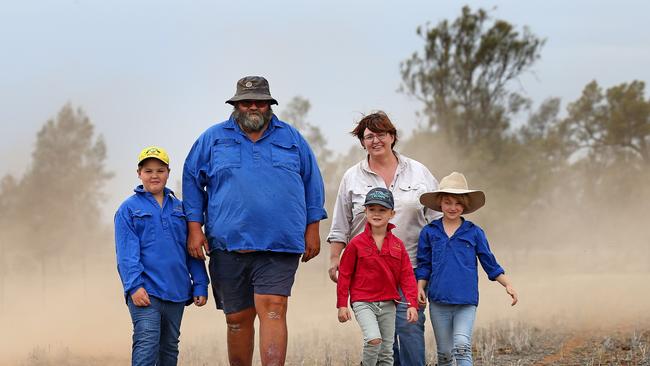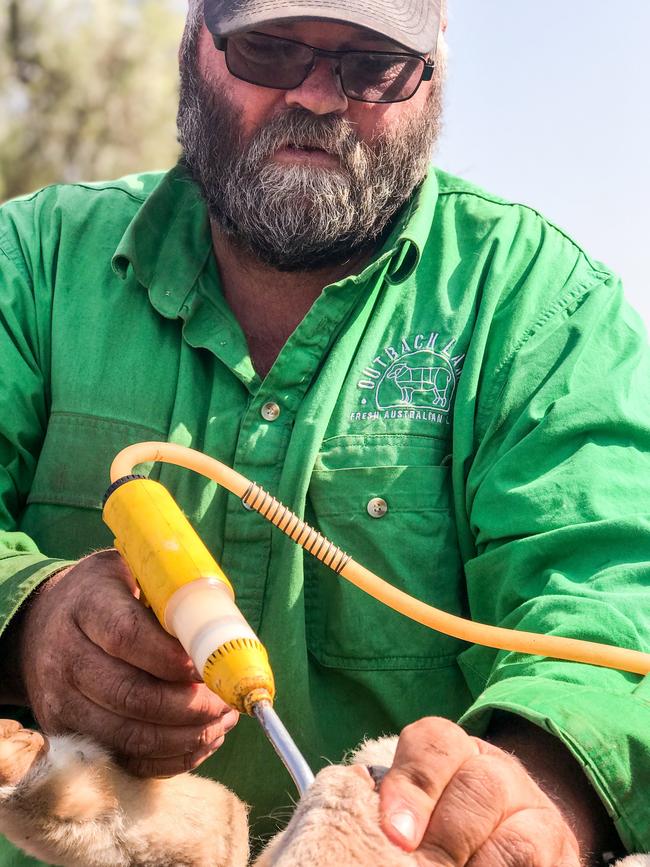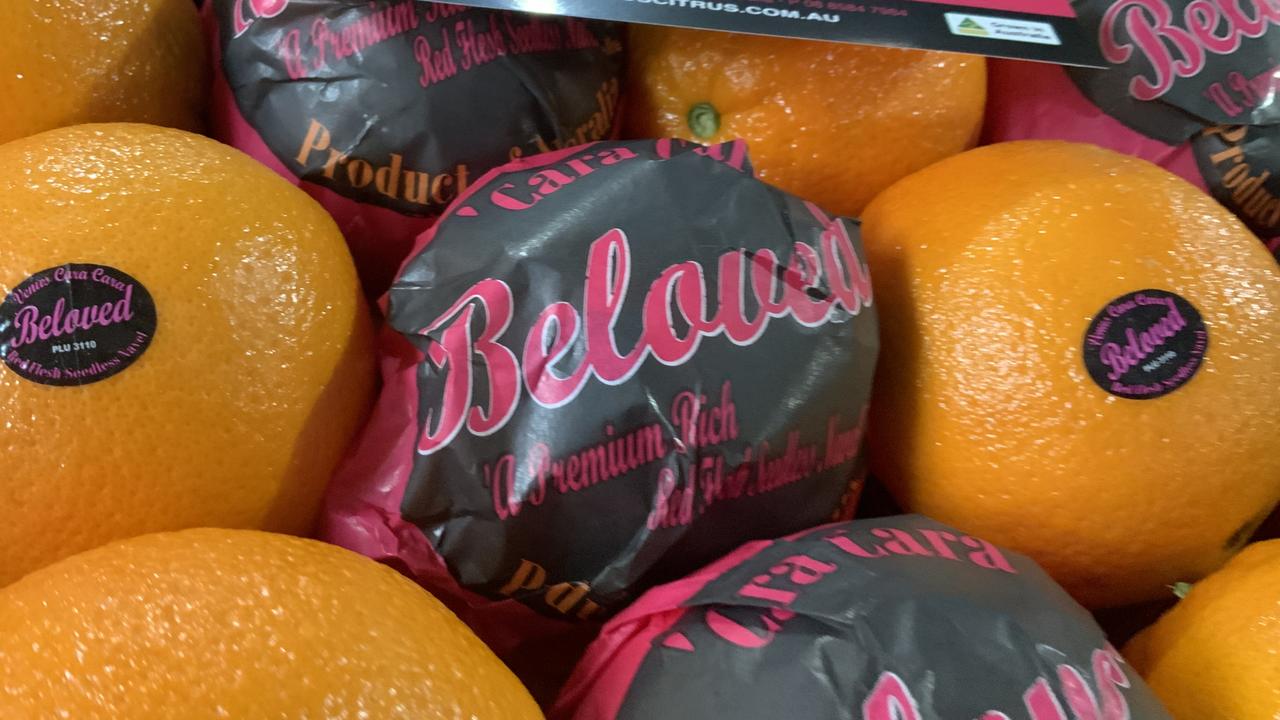Outback Lamb goes from strength to strength
A CONVERSATION about the future resulted in a change of direction for a farming family, writes FIONA MYERS.

A DESIRE to move from commodity to quality has been the driving force behind the Aveyard family’s lamb brand.
Fiona and Bill Aveyard established the Outback Lamb Company two years ago with the goal of turning their second-cross lamb production into a premium brand.
“We make an enormous effort with trying to breed the best quality lambs we can by investing in great genetics, and we thought it was a natural progression to want to process and sell what we were growing,” Fiona said.
Drought conditions may have caused a temporary halt in trade, but Fiona is as eager as ever on the project.
She recently started processing lambs again to be sold under Outback Lamb and hopes the season will allow the plans to go into full swing.

Fiona and Bill farm about 1600ha of land at Tullamore, in central western NSW, and have traditionally run a mixed-farming operation alongside Fiona’s family.
It was during an informal discussion about succession planning that the idea of adding value to their prime lambs emerged.
“We tried to think about what farming might look like for the next generation,” Fiona said. “The way a lot of farmers try to make themselves more viable is to expand the size of their farms and to produce more of the commodity.
“The combined area that the family farms is relatively large for the district but we didn’t want to just keep trying to get bigger.
“We wanted to move away from producing a commodity to have ownership of what we grow and to have an involvement in the end product.”
TOP SHELF
THE Aveyards knew they were doing everything they could to produce high-quality lambs.
Their flock of White Suffolk-Merino ewes is joined to Poll Dorset rams, with sires selected on specific Australian Sheep Breeding Values.
“We like the White Suffolk-Merino ewes because we found they were good mothers but also cut a better quality of wool, and could earn quite good money from this part of the operation,” Fiona said.
Depending on the season, between 800 and 1200 of the crossbred ewes are joined to Poll Dorset rams sourced from the Kelly family, who run the Marocara stud at Wongarbon, NSW.
The structure of the rams must be good — with sloping shoulders and necks that aren’t blocky to help with lambing — but ASBVs are closely studied. “We always try to buy rams which have low birthweights, quick growth rates and score highly for eating quality,” Fiona said.
“We need that quick growth rate because essentially we are trying to move to a point where we can finish lambs to 24kg carcass weight on pasture, so we need to do so as quickly as we can.”
Lambing has traditionally occurred in June-July but this is being tweaked so there is a more consistent availability of lambs throughout the year and an evening of supply.
Lambing rates consistently hover around 150-160 per cent.
MEAT THE MARKET
THE target weight of 22-24kg suits the Outback Lamb brand customers, who are retailing the meat butcher stores in Dubb and in Sydney.
The initial supply of 12 lambs a week was contract killed at Cowra and sent to a Dubbo butcher shop who supplied Outback Lamb to local restaurants. He also sold the branded lamb in his shop.
Any additional lambs that been sold direct to a customer through the brand’s online shop would then be cut and cryovaced in store then delivered locally or cold freighted to customers. Supplying domestic customers wasn’t originally the plan — the goal was to supply a lucrative market in Hong Kong and to airfreight cuts to the expat market.
Fiona said they became “distracted” by supplying the domestic market, which was keen to embrace their Outback Lamb, and this had actually proved to be a smart move, albeit by default.
“Supplying the domestic market has allowed us to develop our story and to get the product right,” she said.
“The export market is where the big money is, and we know Hong Kong would be hungry for clean produce.”
What they could never have prepared for was the crippling drought, which forced a hiatus in production last year.
“We got five inches (125mm) last year instead of our usual 19-20 inches (475-500mm),” Fiona said.
“You just can’t finish lamb in those kinds of conditions and so we told our customers that we would not be supplying them, and they were very understanding.”

TOUGH TIMES
IT HAS also meant they have had to feed grain and hay to their sheep, which does not align with their goal of pasture reared and pasture-finished lambs, but is the only way their flock could survive.
“The sheep are still in the paddocks — it’s not like they are locked up — and I think people really do understand that this is something we needed to do,” Fiona said.
The prime lamb operation is run alongside a pure Merino flock and a cropping program, a reflection of the mixed farming nature of the district.
Paddocks are under crops for a three-year rotation before being sown down to pasture in the final cropping year and then grazed for six to 10 years.
Fiona said they were looking to add some different pasture mixes to complement their traditional lucerne/clover/medic blend they were currently sowing. The thinking behind this plan is to use any summer rainfall and take advantage of changing weather patterns.
“We will sow things like panic grasses to take advantage of summer storms,” she said.
“This will provide more feed for our flock and for the lambs we are trying to finish.
“The stock has been our bread and butter every year and the cropping has been the cream.
“Year-in, year-out, the sheep have allowed us to keep meeting our commitments.
“Bill is a diesel mechanic and loves his cropping and so would probably say we are croppers that run a few sheep, whereas I would be the other way around!”
TOP CHOPS
WITH 18 lambs now going into the abattoirs each week, Fiona said it was exciting to be able to forge ahead with Outback Lamb.
“There is real potential for us to achieve substantial increases in selling prices,” she said.
“We already have the key elements in place to produce premium quality food.
“We have wide open spaces, a healthy environment, the knowledge that comes from generations of farming.
“We also have an entrepreneurial and adaptable attitude where we are committed to ethical and sustainable farming practices not just for this generation of farmers — but also for the next.
“Our vision for Outback Lamb is to become a major player in supplying the discerning consumer with our premium lamb.”


